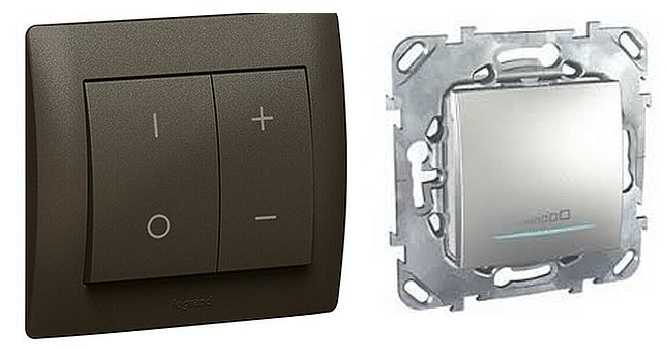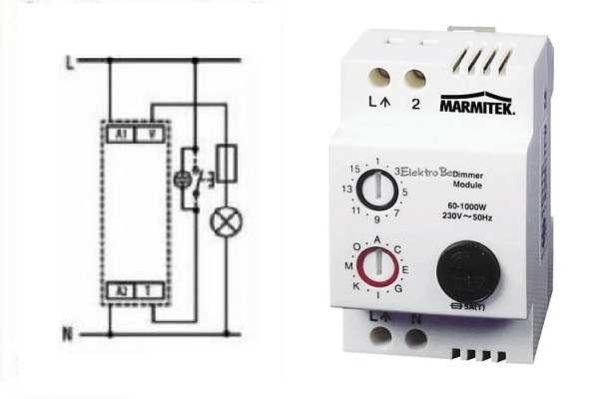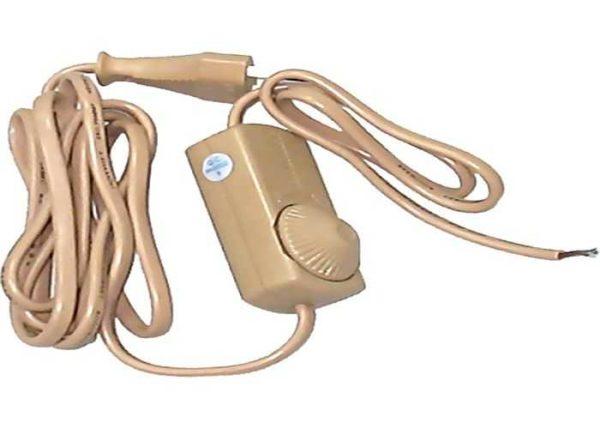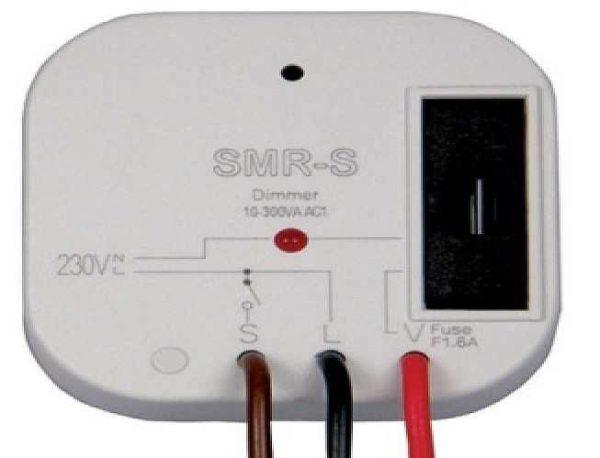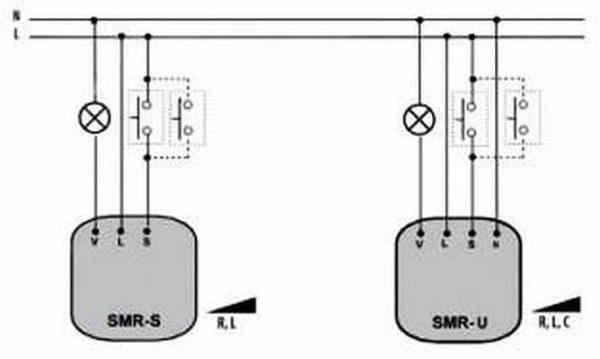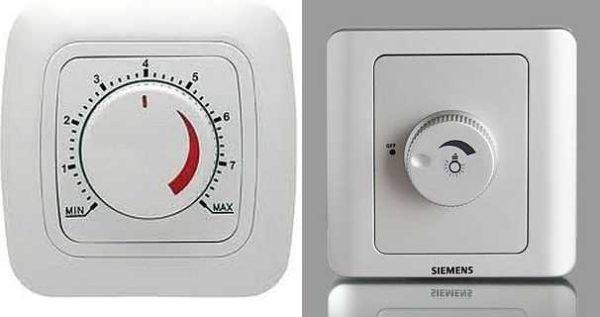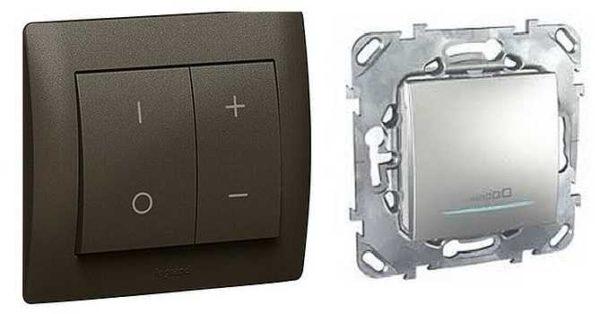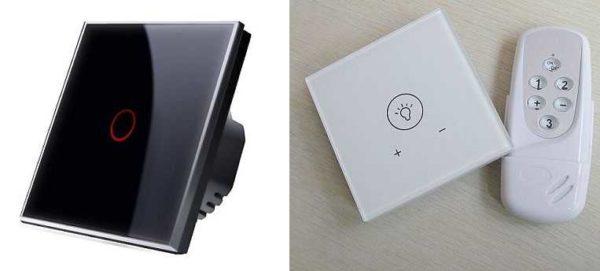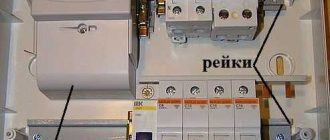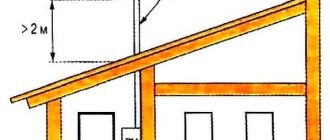Sometimes it is necessary to change the intensity of the lighting. This is done with the help of light dimmers, which are more commonly referred to as “dimmers”. Most of the devices are mounted instead of a conventional switch – right in the same mounting box, and many look similar. How to connect the dimmer with your own hands? Simple – into the phase wire in series with the load. Schemes for installing regulators are simple, you can cope by yourself.
Contenido del artículo
Purpose and functions
Dimmers (in English dimmer) in the home are used to adjust the brightness of lamps, the temperature of heating devices (soldering irons, irons, electric stoves, etc.). These devices are also called dimmers or dimmers, although this is only one of the possible applications. Most effectively work with incandescent lamps, allowing you to extend their life, because if there is a dimmer in the power supply circuit, the lamp is supplied with a minimum current when turning on. And as we know, it is the starting surges that are the cause of their failure.
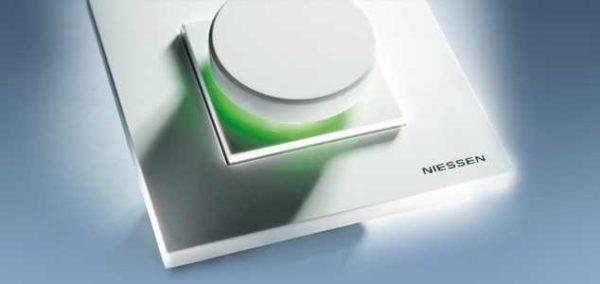
You can not use dimmers with transformer or pulse power supplies (TVs, radios, etc.). This is due to the peculiarities of the device’s operation – at the output, the signal does not look like a sine wave, but only a part of it (the tops are cut off by the keys). When such a power supply is applied, the equipment fails.
Pay attention! With fluorescent lamps, conventional light regulators can not be used. Such a bundle will either not work at all, or the lamp will blink. To work with these sources there are special devices with a different scheme. In general, ordinary dimmers can control only incandescent or LED lamps. When you connect to them energy-saving begins “flashing” light, and halogen simply do not regulate. But you can regulate the brightness of light and for these types of lamps – there are special dimmers, but they cost more.
The very first dimmers were electromechanical and could only regulate the brightness of incandescent lamps. Modern ones can provide a number of additional functions:
- timer-controlled switching off of lights;
- switching the lights on and off at certain times (presence effect, used for long vacations);
- acoustic control (by clapping or voice);
- remote control;
- various modes of operation of lamps – flashing, changing the temperature of light, etc;
- possibility of integration into the “smart home” system.
The simplest dimmers still only regulate the brightness of lighting, but this function turns out to be very useful.
Device and types
Dimmers are made on the basis of a different element base. All of them have their own features and disadvantages. And to understand what a dimmer is and how it works, you need to understand what a particular device is made of. So, there may be options:
When choosing a device, it is not so important to know what type it belongs to, but it is important to take into account the nature of the load to which it will be connected (incandescent and LED or fluorescent and economy).
According to the type of execution dimmers are:
- Modular for installation in the electrical panel on a din-rail. Connect a dimmer of this type can be connected with incandescent lamps, halogen lamps with a step-down transformer. For ease of use, they have a remote control button or a key switch. Such devices are convenient, for example, to regulate the illumination of the yard and the entrance gate from the house, stairwell or front door.
- Dimmers on a cord. These are mini-devices that allow you to adjust the brightness of the luminescence of lighting devices that are included in the socket – table lamps, sconces, floor lamps. Only it is worth knowing that they are compatible mainly with incandescent lamps.
- For installation in a mounting box. They are installed in the mounting box under the switch (in the same box). Compatible with incandescent, LED, halogen lamps with step-down and electronic transformer. They are controlled by a button, which is placed on top of the device or connected to the “smart home” system.
- Monoblock. In appearance very similar to a conventional switch, put in the same mounting box, can be instead of a switch. Included in the break of the phase circuit (schemes below). This type has a large species diversity. With what lamps can be connected to such a dimmer, should be indicated on the body, but if it is an electronic circuit, they work with incandescent and some halogen and LED lamps (on which it is written dimmable or there is a sign). They can be controlled by:
- By means of a rotary disk (rotary dimmers). The light is switched off by turning the disk to the leftmost position. The disadvantage of this model is that the last light value cannot be fixed. When switching on, the light is always set to the minimum brightness.
- Rotary push-button models. Similar in appearance, but switching on/off is done by pressing the disk, and adjustment – by turning it.
- Key-operated. In appearance, very similar to conventional switches. Switching on/off the light is standard – by throwing the key, and adjustment begins after holding the key in the pressed state for more than 3 seconds. There are models in which switching on/off is done by one key, and adjustment by another.
- Touch-sensitive. All control occurs by touching the screen. These models are the most reliable – no mechanical parts, practically nothing to break.
- By means of a rotary disk (rotary dimmers). The light is switched off by turning the disk to the leftmost position. The disadvantage of this model is that the last light value cannot be fixed. When switching on, the light is always set to the minimum brightness.
In private homes and apartments are most often put monoblock dimmers. In the house can still be useful modular version – to change the brightness of lighting in the neighborhood with the possibility of controlling it from home. For such cases, there are models that allow you to control lighting from two places – pass-through dimmers (working on the principle of a pass-through switch).
Diagram of connection of a monoblock dimmer
Most often independently connect monoblock light regulators. They are put instead of a switch. With a single-phase network, the connection scheme is the same as on a conventional switch – in series with the load – in the phase gap. This is a very important nuance. Dimmers are put only in the phase wire break. If you connect the dimmer incorrectly (in the neutral break), the electronic circuitry will fail. In order not to make a mistake, before installation it is necessary to determine exactly which of the wires is phase and which is neutral (zero).
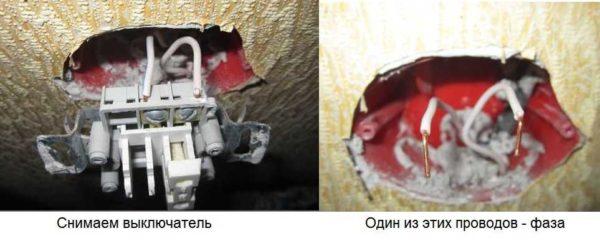
If we are talking about installing a dimmer in place of the switch, then you must first disconnect the wires from the terminals of the switch (with power disconnected at the panel), turn on the circuit breaker and tester, multimeter or indicator (screwdriver with LED) to find the phase wire (when you touch the probe to the phase on the device appear some readings or LED lights up, and the wire neutral (zero) no potential should not be).
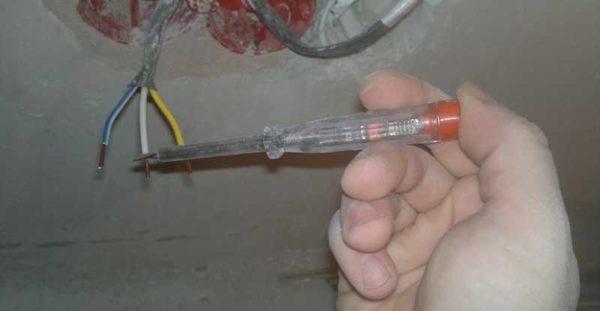
The found phase can be marked in some way – put a line on the insulation, stick a piece of tape, colored tape, etc. Then the power is switched off again (input switch on the switchboard) – you can connect the dimmer.
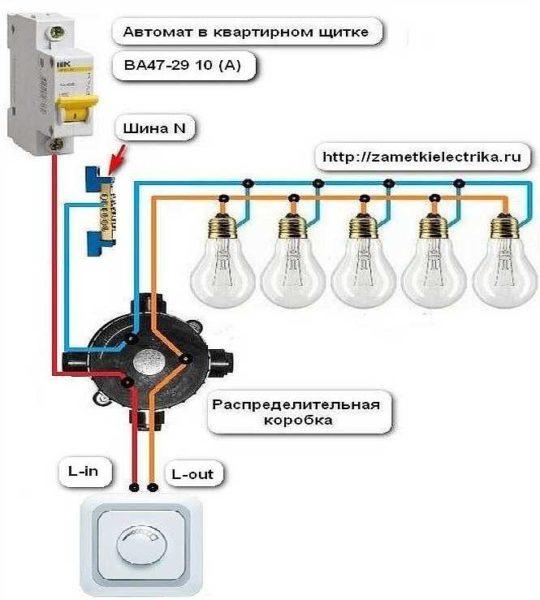
The connection scheme of the light regulator is simple: the input of the device is fed with the found phase wire, from the output the wire goes to the load (in the figure on the junction box, and from there – on the lamp).
There are two kinds of dimmers – in some, the input and output contacts are signed. In this case you should follow the instructions and feed the phase to the signed input. On other devices the inputs are not signed. In them the phase connection is arbitrary.
Let’s consider how to connect a dimmer with a rotary disk. First we need to disassemble it. To do this, remove the disk – it must be pulled towards yourself. Under the disk there is a button, which is fixed by a clamping nut.
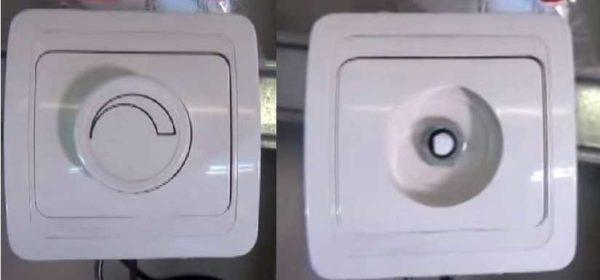
Unscrew this nut (you can use your fingers) and remove the front panel. Under it there is a mounting plate, which will be screwed to the wall. The dimmer is disassembled and ready for installation.
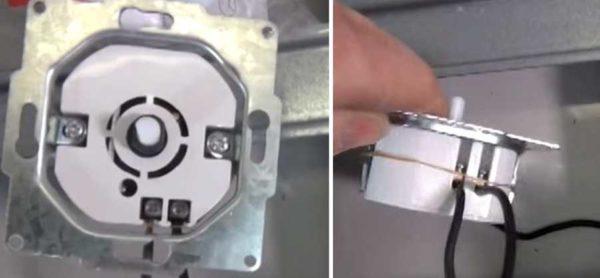
Connect it according to the diagram (see below): the phase wire is connected to one input (if there is an input marking, then to it), to the second input we connect the conductor that goes to the lamp/chandelier.
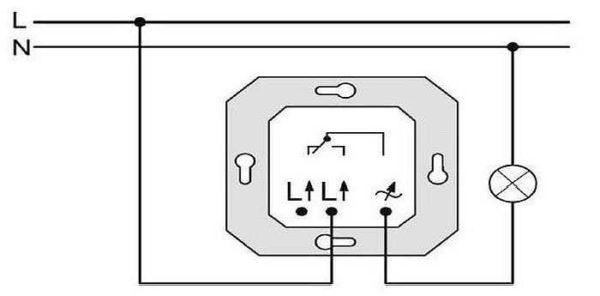
It remains to fix it. Insert the connected dimmer into the mounting box, fix it with screws.
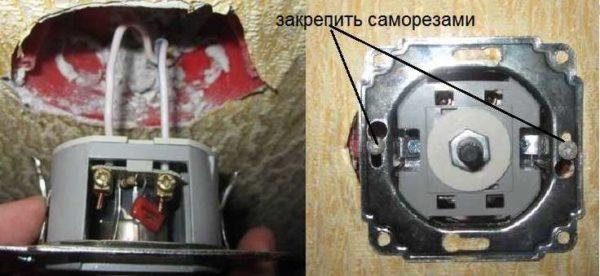
Then put on the faceplate, fix it with the nut removed earlier and, last of all, install the rotary disk. The dimmer is installed. Turn on the power, check the operation.
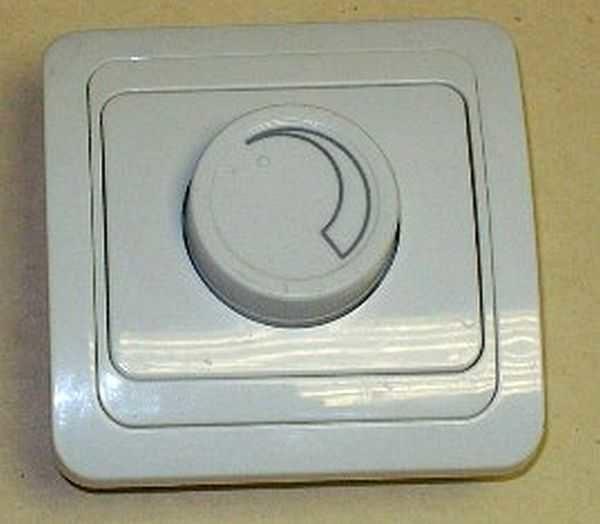
How to connect the dimmer to a light-emitting diode lamp (LED) or tape.
There are no fundamental differences in the method of connection. The feature is only that the dimmer is placed in front of the controller of LED lamps or strips (see the scheme). There are no other differences.
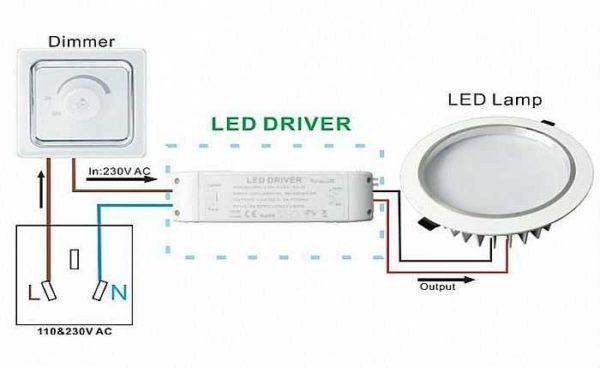
Everything is exactly the same: the dimmer is put in the break of the phase wire, but its output is fed to the input of the controller of led lamps or strips.
Installation of Fibaro FGD211 dimmer with a switch
The peculiarity of this model is that it is compatible with the “smart home” system and is controlled from a computer. There are devices that are controlled with a dimmer installed in a convenient place.
Dimmers that are installed in the mounting box to the switch are also put in the break of the phase wire, but the process of their installation is slightly different. The switch is also removed, we find the phase, the wire is labeled. Next, take the dimmer, connect the jumper (a piece of copper wire in a sheath) terminals 0 and N. To the contacts S1 and Sx we connect 7-10 cm long pieces of wires.
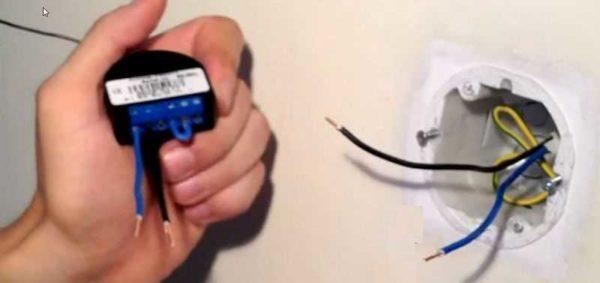
The next step is to connect the dimmer to the wiring. We set the phase wire to the connector with the letter L, the zero wire to N. Tuck the connected device into the mounting box (bend the wires).
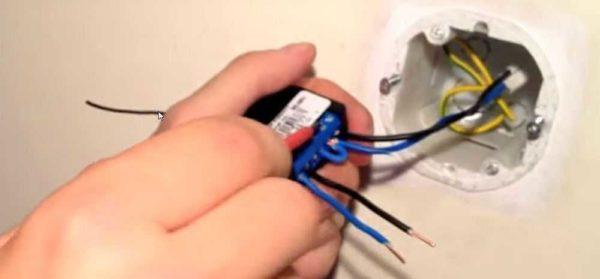
Next, connect the wires previously installed in sockets S1 and Sx to the terminals on the switch (any order).
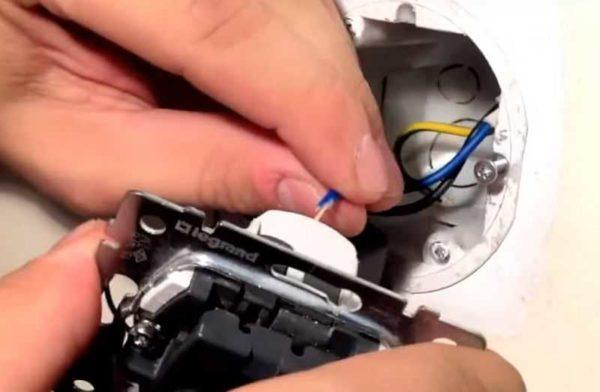
Screw the switch frame into place, then put on the front cover and keys, program the system and check the operation.
If you need to connect a button-controlled dimmer, there will be two more contacts to which you will need to connect a remote button.
Peculiarities of selection and operation
When choosing a dimmer, it is necessary to pay attention not only to what lamps it can work with and what functions it has. It is also necessary to look at what total load it is designed for. Maximum one dimmer can “pull” 1000 watts of load, but most models are designed for 400-700 watts. In reputable manufacturers, depending on the power there is a solid difference in price. In Chinese products there is no appreciable difference in cost.
| Naming | Potencia | Maximum current | Compatibility | Precio | Fabricante |
|---|---|---|---|---|---|
| Volsten V01-11-D11-S Magenta 9008 | 600 W | 2 А | Incandescent lamps | 546 rubles | Rusia/China |
| TDM Valday RL | 600 W | 1 А | Incandescent lamps | 308 rubles | Rusia/China |
| MAKEL Mimoza | 1000 W/IP 20 | 4 А | Incandescent lamps | 1200 rubles | Turkey |
| Lezard Mira 701-1010-157 | 1000 W/IP20 | 2 А | Incandescent bulbs | 770 rubles | Turkey/China |
The second point to remember is that dimmers work with a minimum load. At those, in most cases, the minimum is 40 watts, in some thousandths – 100 watts. If the connected bulbs have less power, they may flicker or will not light up. This happens when LED bulbs are put in place of incandescent bulbs. In this case, one of the lamps is left old (incandescent), which will provide the required minimum load.
Other features of operation are related to compatibility. As already mentioned, conventional dimmers can not work with daylight lamps (with energy-saving including). Halogen lamps simply do not react to changes in the pulse shape. And if you decide to replace incandescent bulbs with more economical ones, you will most likely have to change the dimmer as well.

